Capps Gives Oil Execs the Third Degree
Asks Why Spill Cleanup Technology Has Not Improved in Decades
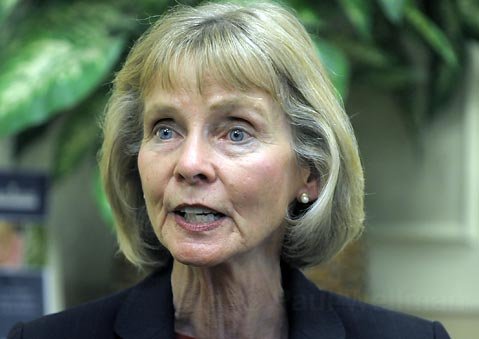
During an Energy and Environment Subcommittee hearing on Tuesday, June 15, Representative Lois Capps wasn’t shy about calling out BP America Chairman Lamar McKay and Shell Oil President Marvin Odum on their companies’ perceived failure to invest significant time or money in developing new ways to mop up spilled oil. Comparing Santa Barbara’s 1969 spill to the current Gulf disaster, Capps took the two to task for using the same cleanup methods today that were employed more than 40 years ago, especially, she said, when their companies have sunk countless dollars into exploration, extraction, and lobbying. Here’s a transcript of her questions and the oil execs’ responses.
Capps: Mr. McKay, last year you testified before the Natural Resources Committee. You had this to say about the role of technology and the oil and gas industry: “The energy industry isn’t usually classified as a high tech business, but it truly is. This technology has been instrumental is protecting the environment. Today’s offshore oil drilling technology bears about as much resemblance to what was available in the 1960s as a rotary dial telephone does to an iPhone.”
That was a very interesting comparison. Let’s look at it, to get the picture of the contrast.
First we have a picture of a rotary dial telephone. Then, an iPhone. Clearly there’s a difference in technology. And we certainly all benefit from those remarkable advances.
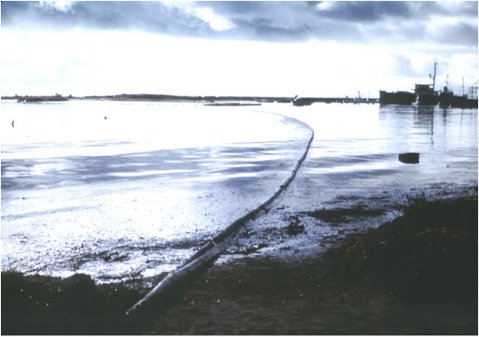
Now, here’s a picture I’m very familiar with, a picture of the boom used in the Santa Barbara oil spill in 1969. That was about the era of the rotary telephone. Now here’s a picture of the boom used in the Gulf today, 40 years later.
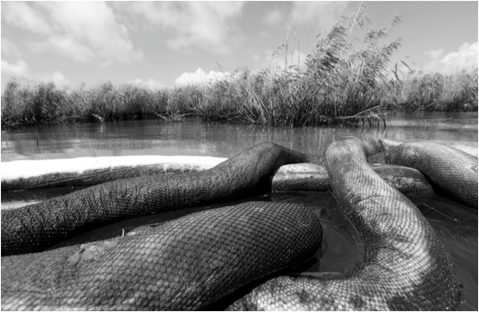
Do you see a big difference between the boom technologies used in these two pictures?
McKay: I don’t see a big change in boom technology. There have been tremendous changes in how boom is deployed and how satellite imagery helps deploy resources into the best possible places.
Capps:Yes we do have satellite imagery now, but that was the era of the rotary telephone. We now live in the era of the iPhone. And it looks a lot, on the shoreline of the Gulf, as it looked to me in 1969. The two cleanup booms however they are deployed look and act pretty much the same. Would you agree?
McKay: That’s true …
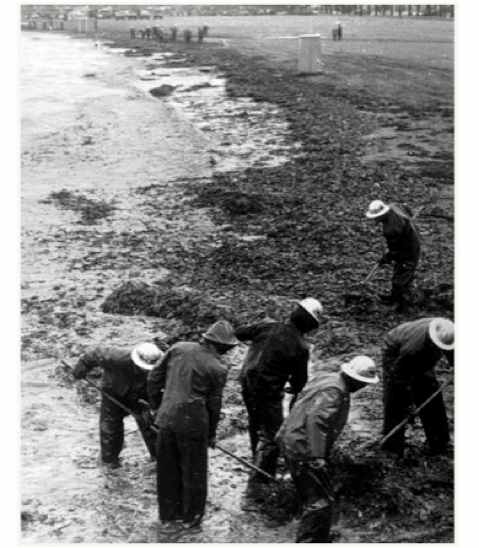
Capps: Now let’s look at another set of pictures. Here’s a picture of workers cleaning up the oil in Santa Barbara. Again, 1969. Now, here’s a picture of a worker mopping up — with his own two hands, bare hands I should add — oil that reached the Gulf’s shore. Again, I don’t see a huge difference in technology between the clean up in Santa Barbara and the clean up now underway in the Gulf.
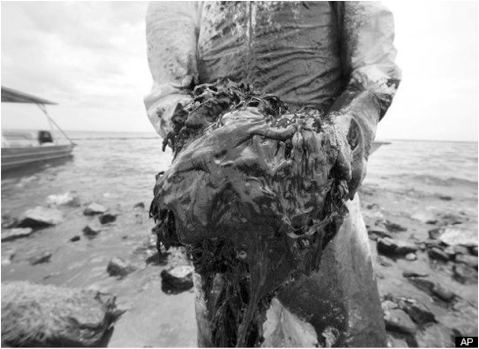
If fact, I don’t see much difference at all — booms, workers mopping up by hand thousands of barrels of spilled oil. So, Mr. McKay, I get that the industry spends a lot of time and effort on exploration and extraction and lobbying. But my problem is that you don’t seem to spend very much on accident prevention and you seem to have made few, if any, real developments on oil spill cleanup. We’re talking about 40 years later!
So, here’s my question: What’s BP’s plan on containing the inevitable accidents from your offshore rigs, which are drilling in harsher and more difficult conditions?
What is it going to look like, 10 or 20 or 40 years from now, when there is another huge spill — to see booms being the big line of defense for our coasts? Will we still be relying on thousands of cleanup workers mopping up the beaches by hand?
Will that be considered state-of-the-art cleanup technology and response, like it is today and like it was 40 years ago?
McKay: We’ve talked a lot about prevention today so I won’t go into that, but in terms of spill response I think one area that we will learn from this incident will be the ability to do more subsea intervention …
Capps: Well okay, but I’m talking about the oil that comes to the surface. Let me switch to the May 12 Oversight and Investigations Subcommittee hearing: a Transocean document was revealed that discussed the strategy of using floating boom to contain oil.
This document warns, quote, “The recovery rate of oil under the best circumstances rarely exceeds 15 percent.” And that’s 15 percent of the oil that reaches the oil’s surface. It’s not a very impressive rate of recovery and what’s more disturbing is the fact that the rest of the proposed techniques are not particularly effective either.
For instance, Chevron’s and BP’s plans that the Chairman held up earlier caution that some marsh cleanup techniques “destroy much wildlife” and “destroy marsh areas.” And Shell’s oil spill response plan describes an approach that stands out from the rest. Section 13 of the Shell plan states that oil will accumulate on places like sand bars and barrier islands. The plan states that this can be, quote, “very helpful” and “cost effective” for collecting the oil. Mr. Odum, does Shell really believe that it is “very helpful” when oil washes up on the barrier islands?”
Odum: Clearly not, and I think the statement is just meant to go to the fact that the ability to stop further encroachment and cleanup, and that’s what’s intended by the statement.
Capps: Do you have any other information? If I had time, I would ask each of you: Is this the state of affairs for cleanup today?
Odum: The answer is yes, you’re seeing the deployment of the technology today to respond to the spill.
Capps: So that’s the best we can do?


